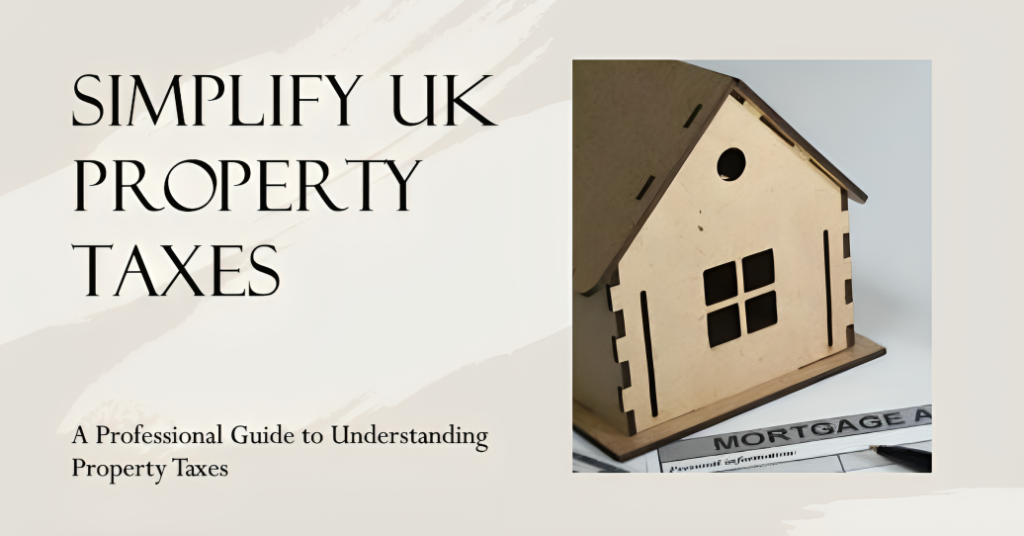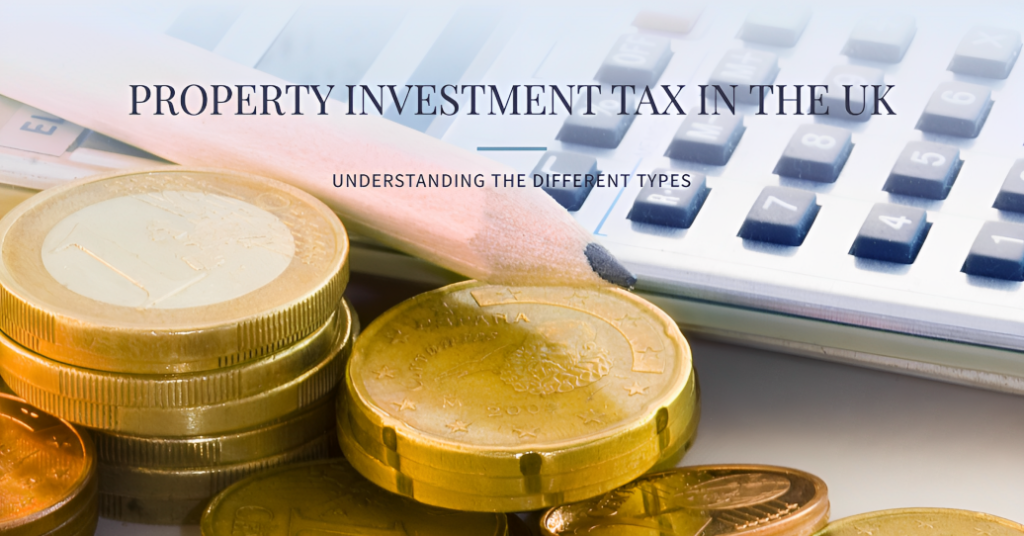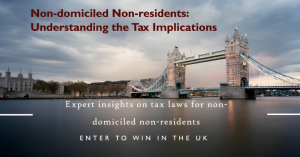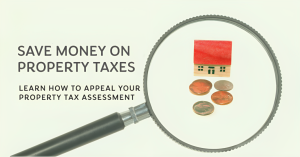UK Property taxes
In the United Kingdom there are several types of Types of property taxes. These include income tax on rental income, capital gains tax on profits from the sale of a property, council tax on the value of the property, stamp duty land tax on the purchase of a property, and additional taxes for landlords such as the wear and tear allowance and mortgage interest relief restriction.
In this comprehensive guide. we will explore the different types of UK property investment taxes helping you navigate the complexities of the tax system.
What is Property Investment Tax?
Property Investment Tax also known as property tax or real estate tax. Refers to the taxes imposed on individuals or businesses who own and invest in real property. These taxes are collect by the government to generate revenue and regulate property ownership.
Why Property Taxes is Important?
Property taxes is critical for investors to understand because it directly affects the profitability of their investments. Failing to comply with tax regulations can result in financial penalties as well as legal consequences.
Types of UK Property Taxes

In the UK property investment is subject to several taxes. Let’s explore the most significant ones:
Capital Gain Tax
Capital gains tax (CGT) is a tax on the profit made when an asset is sold for more than it was purchased for. In the UK, CGT is usually applied to the sale of assets such as property, shares, and personal possessions worth over £6,000. The tax is paid on the gain (the difference between the sale price and the purchase price) and not on the total sale price.
For basic rate taxpayers, If the CGT amount is within the basic Income Tax band you’ll pay 10% on your gains (or 18% on the residential property). You’ll pay 20% (or 28% on the residential property) of any amount above the basic tax rate.
However, for additional rate taxpayers, the Capital gains tax CGT rate is 28% on gains from residential properties and 20% on gains from chargeable assets.
An additional rate taxpayer is an individual who has an income above £150,000 in the tax year. This includes income from employment, self-employment, and other sources such as rental income and interest on savings.
It’s also worth noting that certain assets may be eligible for relief or exemption from CGT, regardless of the taxpayers rate. For example, a main residence is generally eligible for private residence relief, which means that you don’t have to pay CGT on the sale of your home if you’ve lived in it as your main home for at least 3 years. Additionally, there are certain other reliefs available, such as the Entrepreneurs’ Relief, which can reduce the rate of CGT to 10% for certain disposals of business assets.
As always, it’s a good idea to consult with a tax professional to determine if you are an additional rate taxpayer and to understand the tax implications of any asset disposals.
Stamp & Land Duty Tax
Stamp Duty Land Tax (SDLT) is a type of property investment tax that is paid when purchasing a property in the United Kingdom. The amount of SDLT that is due is based on the purchase price of the property and is typically paid by the buyer at the time of purchase.
The current SDLT rates for residential properties in the UK are as follows:
- 0% on the first £250,000 of the purchase price
- 2% on the portion of the purchase price between £250,001 and £925,000
- 5% on the portion of the purchase price between £925,001 and £1,500,000
- 10% on the portion of the purchase price between £1,500,001 and £2,000,000
- 12% on the portion of the purchase price above £2,000,000
Rental Income Tax
In England, rental income is subject to income tax. The tax rate will depend on the individual’s total income for the year. As rental income is added to other sources of income to determine the overall tax rate. Landlords are also required to file a self-assessment tax return each year. Listing their rental income and expenses. Landlords can deduct certain expenses. such as mortgage interest, repairs, and maintenance, from their rental income to reduce their tax liability. It is recommended to consult a tax professional or HM Revenue and Customs (HMRC) for specific advice and to ensure compliance with tax laws.
For the tax year 2022-2023, the basic rate of income tax is 20% on income up to £50,000. Income above £50,000 is subject to a higher rate of 40%. If an individual’s income is over £150,000, they will pay 45% on the income above £150,000.
Inheritance Tax
In the UK, Inheritance Tax (IHT) is a tax that is levied on the value of an individual’s estate (property, money, and possessions) when they die. The current threshold for Inheritance Tax in the UK is £325,000, which is known as the “nil-rate band”. This means that if the value of an individual’s estate is below this threshold, no Inheritance Tax will be due.
If the value of an individual estate exceeds the nil-rate band. The excess will be subject to IHT at a rate of 40%. However, there are certain gifts and transfers that are exempt from IHT. Such as gifts to a spouse or civil partner charitable donations, and gifts made more than 7 years before death.
Furthermore in the UK a special tax benefit called the residence nil-rate band (RNRB) was introduced in 2017. This allows individuals to pass on their home to their children or grandchildren without paying inheritance tax. For the tax year 2021-2022. Each person can claim an RNRB of £175,000 in addition to the regular inheritance tax allowance. Giving them a total tax-free allowance of £500000.
It’s important to note that Inheritance Tax can be a complex area of tax law, and it’s always a good idea to seek professional advice when planning for inheritance tax and estate planning.
In the UK, there are a number of reliefs and exemptions available for Inheritance Tax (IHT) that can help to reduce. Even eliminate the tax liability on an individual’s estate. Some of the most common reliefs and exemptions include:
Council Tax
The local councils in England, Scotland and Wales use Council Tax as a taxation system to finance various local services. Like waste collection street lighting and policing. Homeowners are required to pay Council Tax based on their property value, location and the services offered by their local council. Typically homeowners pay Council Tax annually.
Annual Tax on Enveloped Dwellings
Annual Tax on Enveloped Dwellings (ATED) is a tax that is imposed on UK companies. That own residential properties valued at over £500,000. The tax is based on the value of the property as of April 1st of each year. The rate of tax varies depending on the value of the property.
There are several reliefs and exemptions available for ATED, including:
- Properties used for the purpose of a trade or business, such as rental properties.
- Properties that are available for rent on the open market for at least 140 days per year.
- Properties that are used for the purpose of a charitable organization.
- Certain age or historically significant properties possess these characteristics.
- Companies qualifying as qualifying companies under the ATED rules own these properties.
It’s important to note that these reliefs and exemptions may change over time, and you should consult with a tax professional to ensure compliance and to ensure that you are taking advantage of all available reliefs and exemptions.
Non-resident property investment taxes implications
If you’re a non-resident considering investing in real estate, it’s critical to comprehend the resulting tax consequences.
Learn about the tax policies and procedures of the nation or area where you intend to make an investment. By optimizing your content to include relevant keywords related to non-resident property investment tax implications, you can attract targeted traffic to your website.
Changes in tax legislation or regulations to be aware of:
Tax legislation and regulations are subject to frequent updates and changes. It is vital to stay informed about any modifications that may impact property investments. Regularly monitor reputable sources and stay up to date with the latest tax laws. By incorporating keywords related to changes in tax legislation or regulations into your content, you can position yourself as a reliable source of information for your audience.
Additional Considerations
Accurate property tax assessments are essential in calculating the amount owing because property taxes are a significant financial burden for homeowners. However, there are frequent differences in these tax assessments.
Fortunately, if property owners feel these assessments are incorrect or excessively exorbitant, they may contest them. This article will examine the procedure for challenging tax assessments and their significance and potential for significant savings.
Importance of professional Tax Advisor
Property investment can be complex, particularly when it comes to taxation. Seeking professional advice or consultation from tax experts or financial advisors can provide valuable insights and guidance. Include relevant keywords related to professional advice or consultation in your content to attract individuals seeking expert assistance in their property investment endeavors.
Conclusion
Investing in UK property can be financially rewarding, but it comes with complex tax obligations. Understanding the various types of property investment taxes. Tax efficient strategies and the importance of professional Tax advisor is Important for successful property investment. By navigating tax landscape. You can maximise your tax returns and minimise taxes.
Frequently Asked Questions
SDLT is a tax imposed on the purchase of property or land in the UK.The payment is dependent on the property’s purchase price and changes according to various thresholds and rates. Residential and non-residential properties may have different rates.
Yes, there are exemptions and reliefs that property investors can take advantage of. For instance, first-time buyers may be eligible for a reduced rate of SDLT, and certain property transactions, such as those involving multiple dwellings, may qualify for reliefs or lower rates.
CGT is applicable when a property is sold or disposed of, and it is calculated based on the profit made from the sale. Property investors need to report and pay CGT on the gain realized. However, certain reliefs, like main residence relief and lettings relief, may be available, reducing the CGT liability.
Yes, property investors can claim tax deductions for allowable expenses incurred in generating rental income. These may include mortgage interest, property repairs, property management fees, and insurance costs. It’s essential to keep proper records and ensure that the expenses claimed are legitimate.










